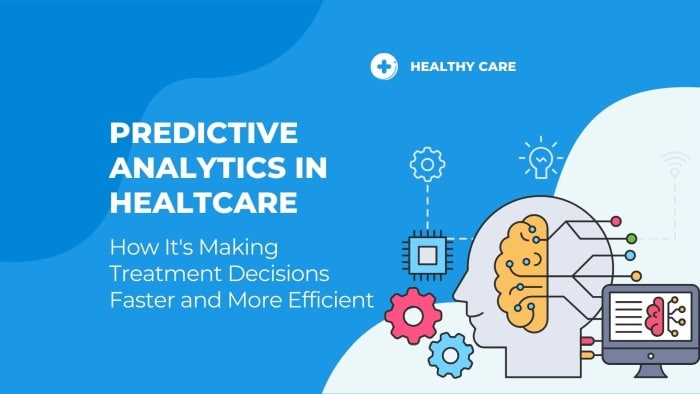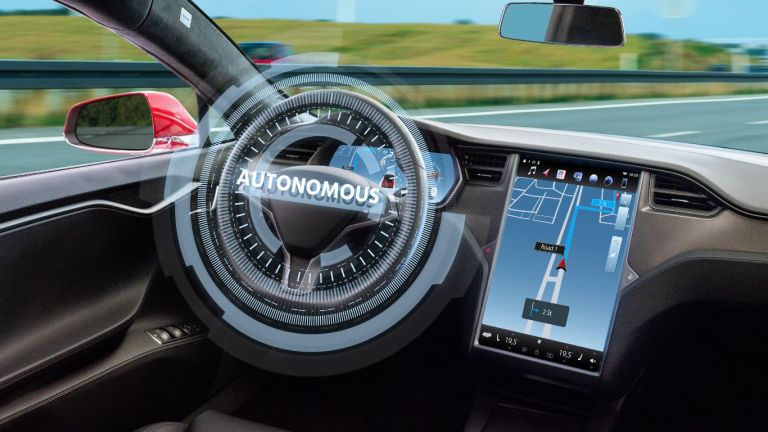Prescriptive Vs Predictive Analytics: What Is Prescriptive Analytics And How Does It Differ From Predictive Analytics

Prescriptive Vs Predictive Analytics: The distinction between them can be difficult to understand, even for people with a background in business analytics.
Prediction is the practice of determining future outcomes or possible events, usually by drawing on information about similar past events. It is also used more generally to describe forecasting any time period into the future (such as weather prediction).
Sometimes predictions are based on new data that becomes available over time. Prediction has always been an important part of human society. Humans have predicted eclipses using drawings on the ground for thousands of years before we knew anything about science or mathematics.
But how does prediction happen in the digital world? One way is through predictive analytics, which uses statistical techniques and machine learning to predict customer behavior, optimize operations, and make better decisions. That’s not all, though! There’s also prescriptive analytics.
If predictive analytics is figuring out what might happen given some constraints, then prescriptive analytics tries to figure out the best course of action given those same constraints. As you might imagine, there are many applications for both practices!
No matter how it is used, prescriptive analytics can help people make better decisions by providing insights that go beyond simple predictions. In this blog post, we will explore the differences between prescriptive and predictive analytics in more detail.
1) How is Prescriptive Analytics Different from Predictive Analytics?

The main difference between predictive and prescriptive analytics is that prescriptive analytics can help you take action to improve your business. It’s not just about predicting what will happen in the future but also about using data to make decisions now.
Predictive analytics is often used for marketing, such as when a company wants to know how best to advertise a new product before it launches.
For example, a predictive model might tell you that 40% of your customers are likely to leave in six months if nothing changes. A prescriptive model might tell you how much money it would take to retain them instead.
Prescriptive analytics often works with inventory management or customer churn by making adjustments before those outcomes happen instead of reacting afterward. In addition, predictive analytics only focuses on a few potential futures, whereas prescriptive analytics takes into account many more scenarios.
2) How can businesses benefit from prescriptive analytics?

Predictive analytics is great for determining what may happen in the future, but prescriptive analytics goes one step further to help you avoid mistakes before they happen. It’s like an advanced warning system that lets you know when something might go wrong so you can fix it before anything bad happens.
Plus, predictive analytics takes a lot of time and money to get right, which can be tough if you don’t have a lot of either one. With prescriptive analytics, you can use historical data to make predictions without having to spend weeks or months gathering new information first.
There are a number of ways businesses can benefit from prescriptive analytics. For example, by understanding which actions are most likely to lead to desired results, businesses can optimize their marketing campaigns for better ROI or target their product development efforts where they are most likely to succeed.
3) The use of historical data in predictive and prescriptive analytics models

Historical data is a critical component of predictive and prescriptive analytics models. By analyzing past trends, businesses can gain valuable insights into future patterns and identify potential risks and opportunities
. Descriptive analytics models use historical data to understand what has happened in the past and identify important trends.
Data analytics models go one step further, using historical data to predict what will happen in the future. Business analytics models go even further, using historical data to prescribe actions that should be taken to achieve specific goals. All of these types of models rely on historical data to be accurate and effective. As a result, businesses that want to make use of predictive and prescriptive analytics should give careful consideration to the historical data they use in their models.
These models are only as good as the data that goes into them. This is where diagnostic analytics come in. Diagnostic analytics is used to understand how an analytics model arrived at a particular prescription. By understanding the logic behind the prescription, businesses can be sure that the prescription is accurate and appropriate for their specific situation.
In short, prescriptive and diagnostic analytics work hand-in-hand to ensure that businesses make the best decisions possible.
4) The different types of data analytics and how each can be used to improve business performance

Data analytics is a broad field that covers a wide range of activities, from data mining and machine learning to more traditional forms of data analysis. Each type of data analytics has its own strengths and weaknesses, and businesses can use different types of data analytics to improve different aspects of their performance.
Data analytics is the process of inspecting, cleansing, transforming, and modeling data with the goal of discovering useful information, suggesting conclusions, and supporting decision-making. Data analytics is used in a variety of industries to allow companies and organizations to make better business decisions and improve operational performance.
There are four main types of data analytics: descriptive, diagnostic, predictive, and prescriptive.
Descriptive data analytics answers the question, “What happened?” This type of data analysis is used to generate reports and dashboards that summarize past data and show current trends. Descriptive data analytics can be used to identify issues and diagnose problems.
Diagnostic data analytics goes a step further than descriptive data analytics by answering the question, “Why did it happen?” This type of data analysis is used to take a deep dive into data to identify the root causes of problems.
Data analytics has many benefits for businesses, including improved decision-making, cost savings, increased revenue, and improved customer satisfaction.
5) How machine learning can be used to create more accurate predictions and prescriptions

Machine learning is a rapidly growing field that holds immense potential for improving predictions and prescriptions. Traditional predictive analytics software relies on linear models that are limited in their ability to handle nonlinear data.
Machine learning, on the other hand, can handle nonlinear data more effectively and make more accurate predictions as a result. In addition, machine learning can be used to develop new prescriptive analytics software that can provide tailored recommendations based on an individual’s data.
For example, machine learning could be used to develop a prescription drug app that predicts which medication would be most effective for a particular patient. Machine learning is also being used to develop diagnostic tools that can detect disease earlier and more accurately.
In a nutshell, machine learning has the potential to revolutionize predictive and prescriptive analytics and improve our ability to make accurate predictions and prescriptions.
6) Examples of businesses that are using predictive and prescriptive analytics successfully

Businesses have long used analytics to make better decisions, but the advent of big data and powerful analytical tools has taken things to a whole new level.
Although different types of analytics and analysis fall under the same general umbrella as business decision-making, predictive and prescriptive approaches to data analysis use different tools to make different kinds of predictions and create different kinds of insights.
For example, businesses use predictive analytics to anticipate what customers are likely to buy and when they’re likely to make a purchase. On the other hand, businesses use prescriptive analytics to suggest the ideal moment and place for customers to be most receptive to a product or offer. Both tools, though similar in the sense that they’re both forms of predictive analytics, are used for different reasons and offer different insights.
Let’s take a real-life situation when a company uses a prescriptive analytics tool: I recently received an email from Master K. explaining that a competitor had lowered their prices and that it was currently not profitable for MK to sell their burger for less than $4.95. If I visited their website after viewing the email and then entered my location and ordered a burger, it might be cheaper for them to give me that offer on their website than in-store because they’re targeting customers who are in the buying mood while they’re on the web and then targeting them in-store with a coupon for a burger for $4.95.
In order to reduce costs and increase profitability, MK is using a predictive analytics tool to send me an email that offers me a $5 burger on their website if I order through them and not through their competitor. Data is collected about me (age, location, website visited after the coupon was sent), and algorithms are used to predict my behavior (the offer will make me more likely to order a $5 burger online, and maybe they can reduce costs in the process).
In conclusion, we can only expect the use of predictive analytics to continue to increase; we may even see it in less and less traditional industries, and we have to be more aware of what kind of data is collected about us (or in this case, about me).
7) What are some of the challenges involved in implementing prescriptive analytics?

Implementing prescriptive analytics can be challenging for companies for a number of reasons. First, prescriptive analytics requires a large amount of data in order to generate accurate models. This data can be difficult and costly to obtain, especially for organizations that don’t have well-established data collection processes.
Additionally, prescriptive analytics models can be complex and require specialized skills to develop and interpret. As a result, organizations may need to invest in training for their staff or hire consultants with expertise in prescriptive analytics.
Finally, prescriptive analytics is only as effective as the actions that are taken based on its recommendations. Organizations need to have the framework in place to make decisions and take action based on prescriptive analytics results.
Without such a framework, prescriptive analytics can simply be a piece of information that isn’t used effectively.
Consequently, implementing prescriptive analytics can be a significant challenge for companies, but it is one that can ultimately lead to operational improvements and competitive advantages.
8) What are some of the best tools and platforms for implementing prescriptive analytics?

Predictive analytics models are the best tools for implementing prescriptive analytics.
However, predictive analytics models are not perfect. They can only be as accurate as the data that is used to create them. As a result, predictive analytics models must be constantly updated with new data in order to remain accurate.
There are a number of different predictive analytics software platforms on the market. Each platform has its own strengths and weaknesses. As a result, it is important to choose a platform that is right for your organization’s specific needs.
The three most popular predictive analytics software platforms are SAS, IBM SPSS, and Microsoft Azure ML.
SAS is the oldest and most established predictive analytics platform. It offers a wide range of features and is used by many large organizations. However, SAS is also very expensive.
IBM SPSS is a less expensive option that is suitable for small and medium-sized businesses.
Microsoft Azure ML is a cloud-based platform that is growing in popularity due to its flexibility and scalability.
No matter which predictive analytics platform you choose, you need to make sure that you have access to quality data. Without quality data, your predictive models will not be accurate.
There are a number of different ways to get quality data, including surveys, customer interviews, focus groups, and data mining.
9) How do you get started with prescriptive analytics?

If you’re interested in getting started with prescriptive analytics, there are a few things you need to keep in mind.
First, prescriptive analytics relies heavily on data mining, so you’ll need to have a good understanding of how to collect and analyze data.
Second, prescriptive analytics often deals with unstructured data, so you’ll need to be comfortable working with data that doesn’t have a clear structure.
Finally, prescriptive analytics is all about finding the best possible solution to a problem, so you’ll need to be able to think creatively and come up with original solutions. If you can keep all of these things in mind, you’ll be well on your way to success with prescriptive analytics.
In order to make sure your data is ready for prescriptive analytics and get the most out of this powerful technology, you need to use the right tools and platforms.
We’ve put together a list of some of the best options available here so that you can get started today. If you want to learn more about business improvement, please subscribe to our email list and download our book, Kaizen Intelligence. Thanks for reading!

About the Author
Liviu Prodan
Liviu is an experienced trainer and LifeHacker. He’s been living the ‘Corpo life’ for more than 15 years now and has been a business developer for more than 12 years. His experience brings a lot of relevancy to his space, which he shares on this blog. Now he pursue a career in the Continuous Improvement & Business Development field, as a Lean Six Sigma Master Black Belt, a path that is coherent with his beliefs and gives him a lot of satisfaction.








